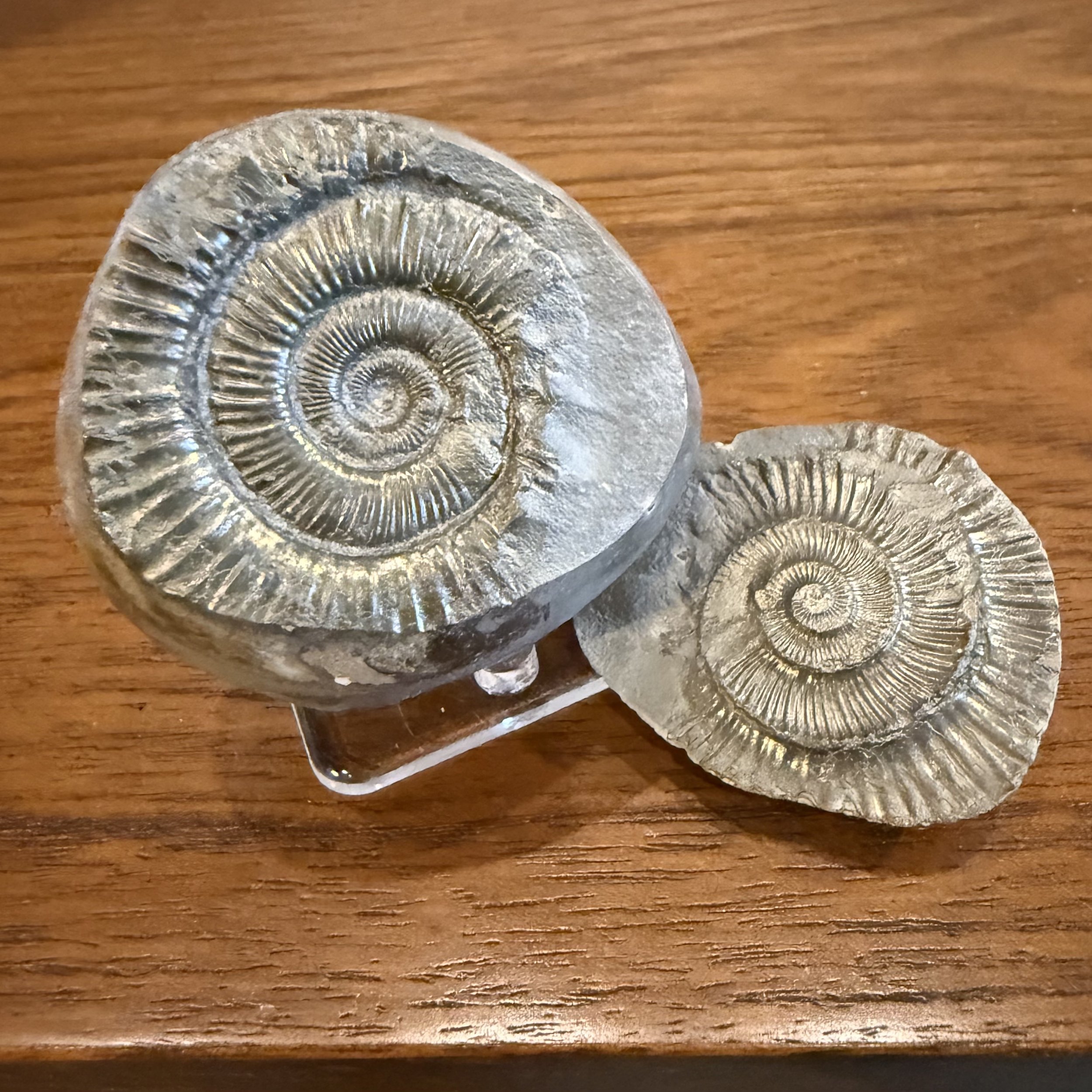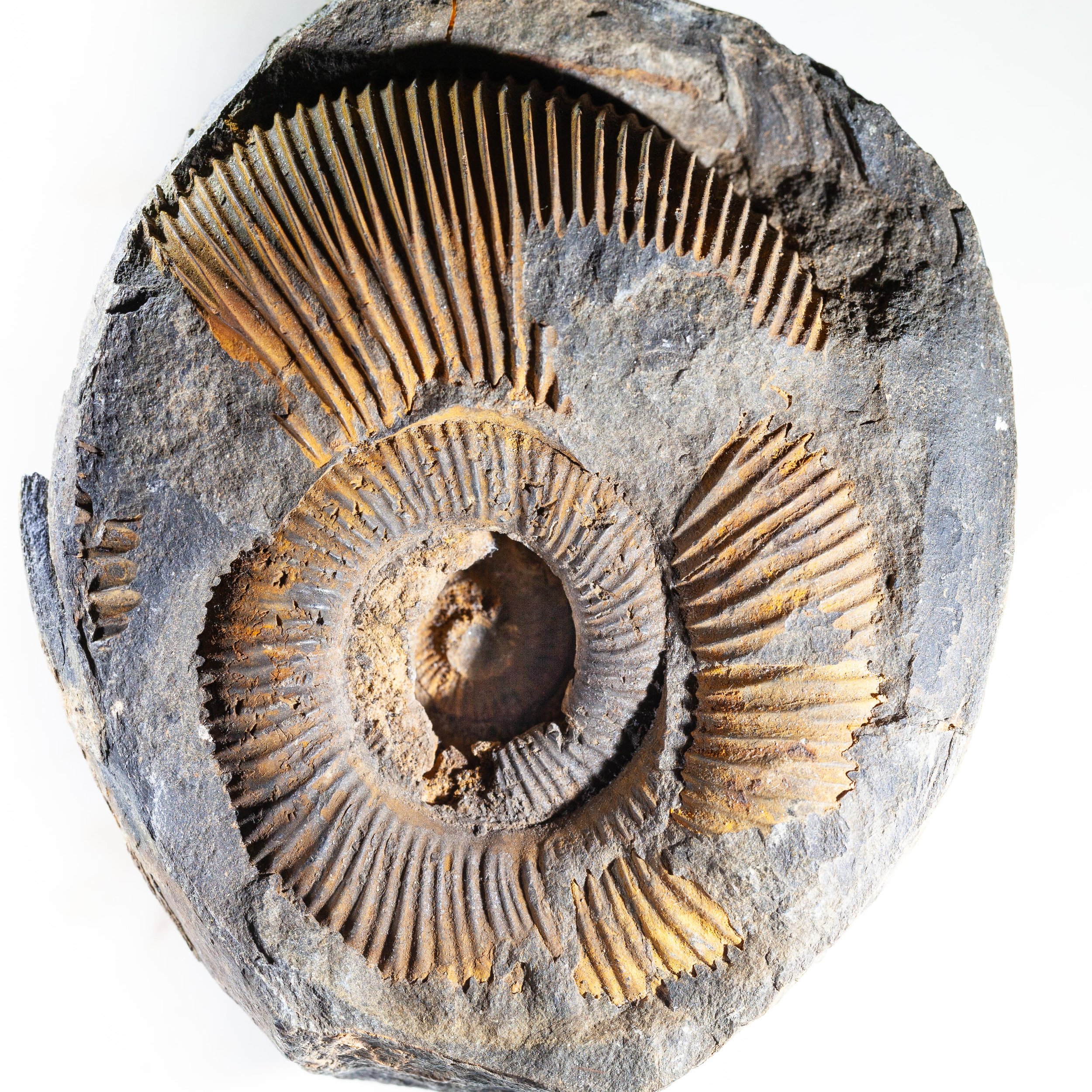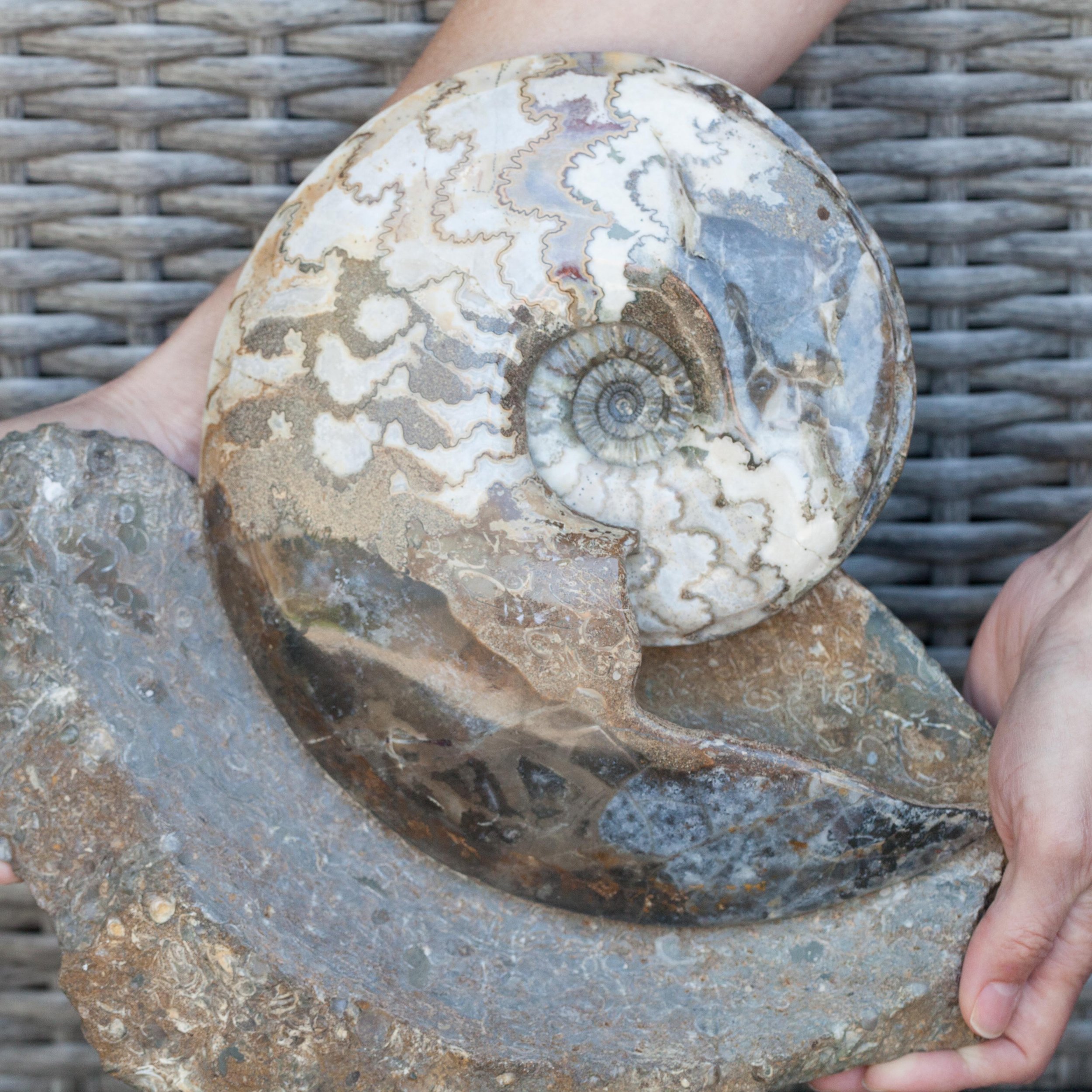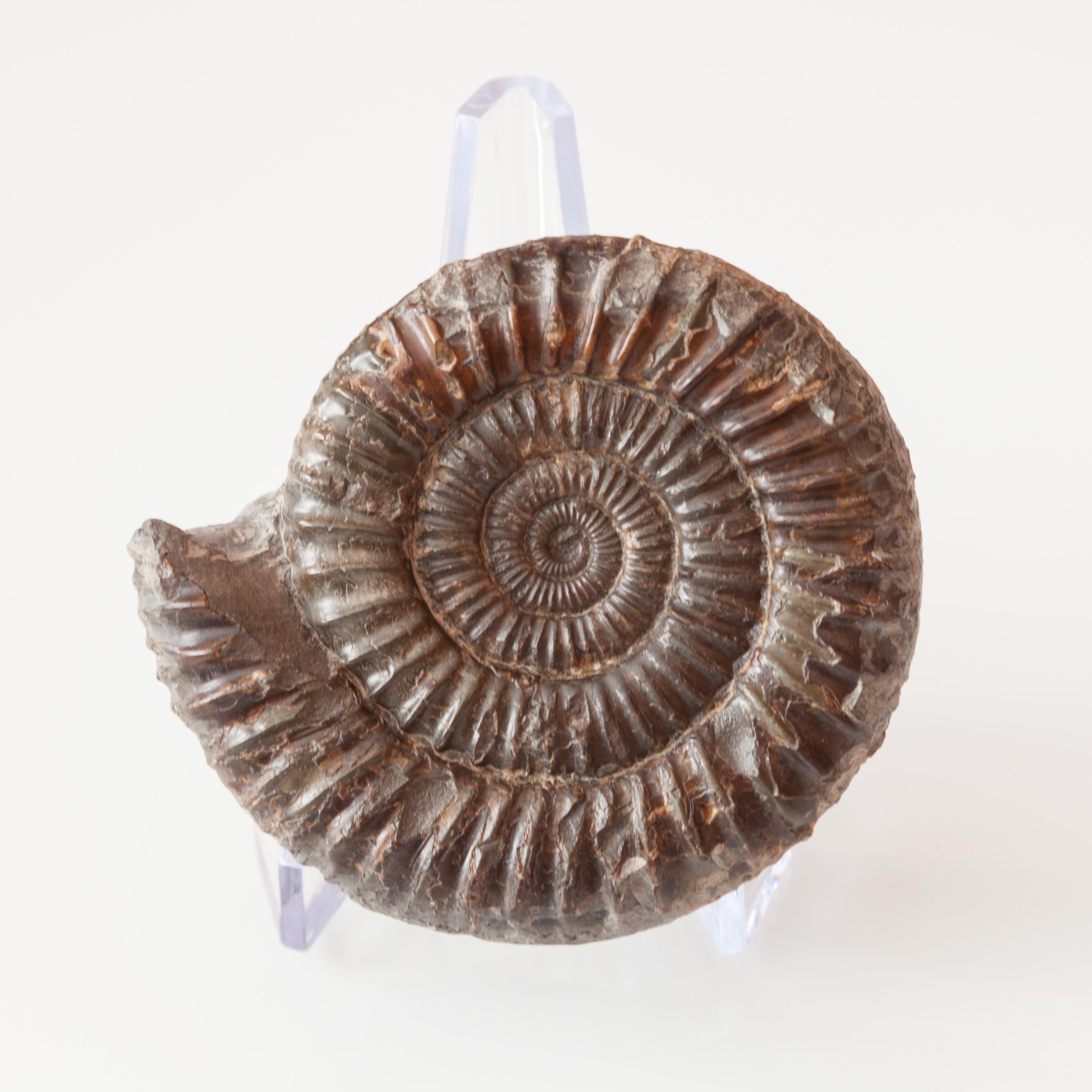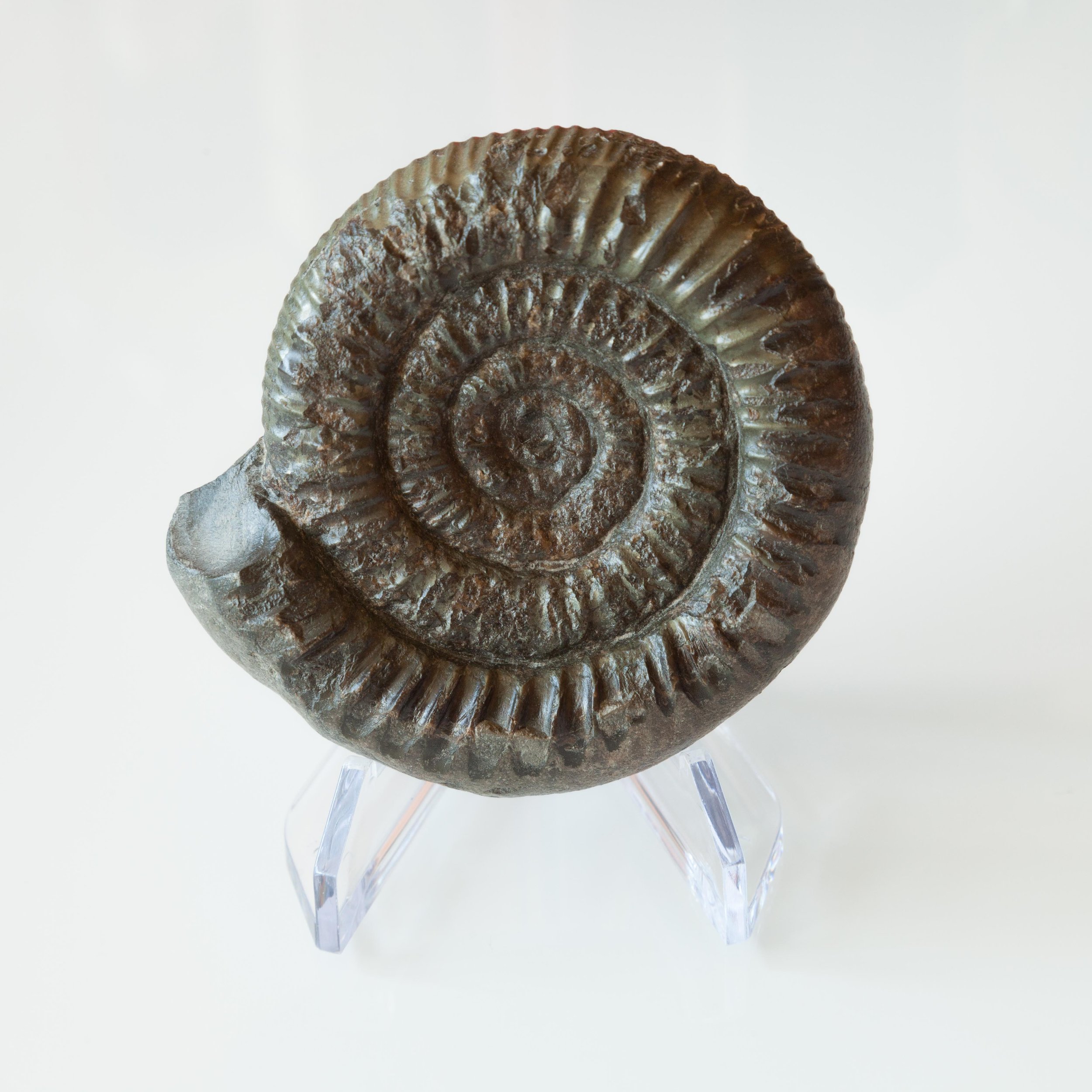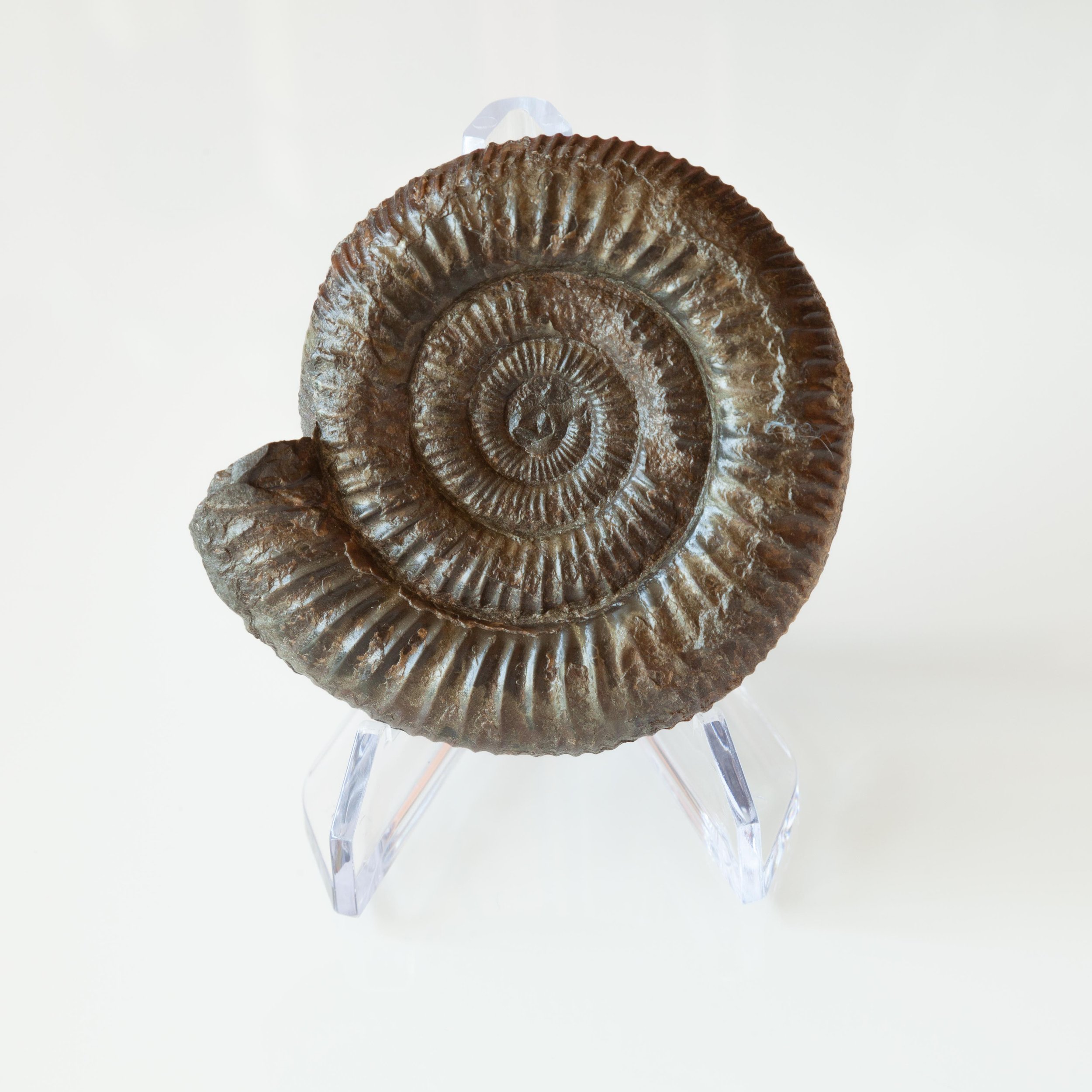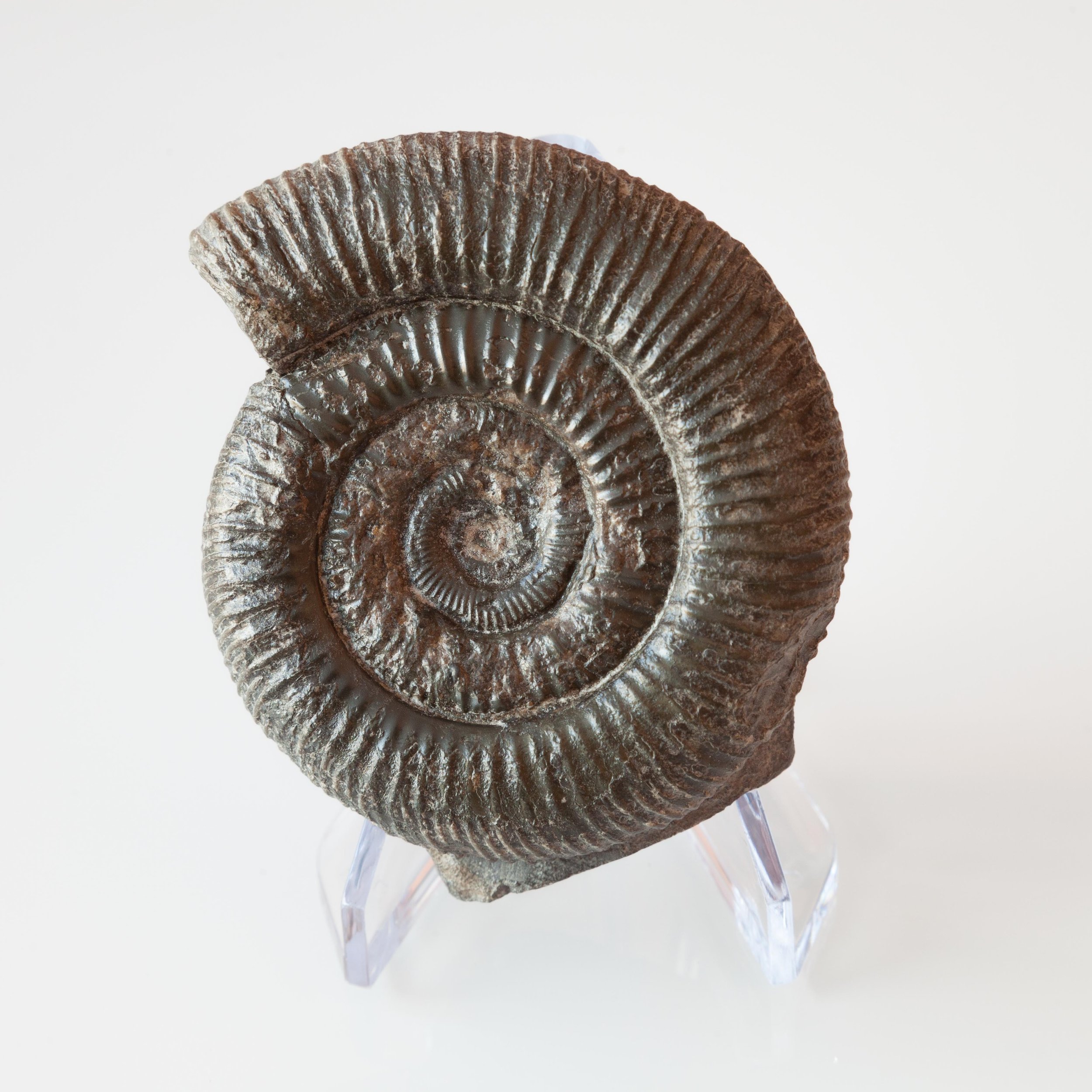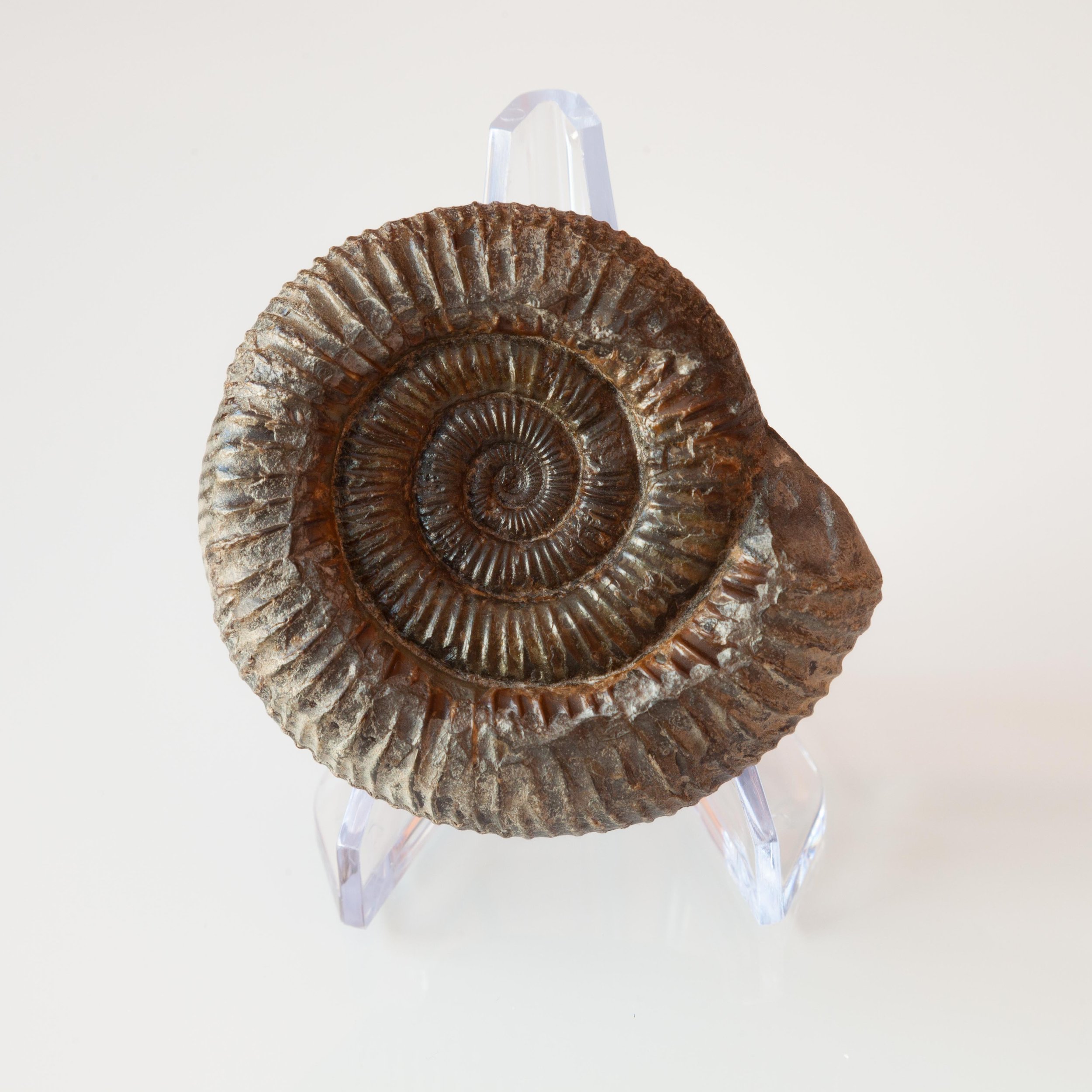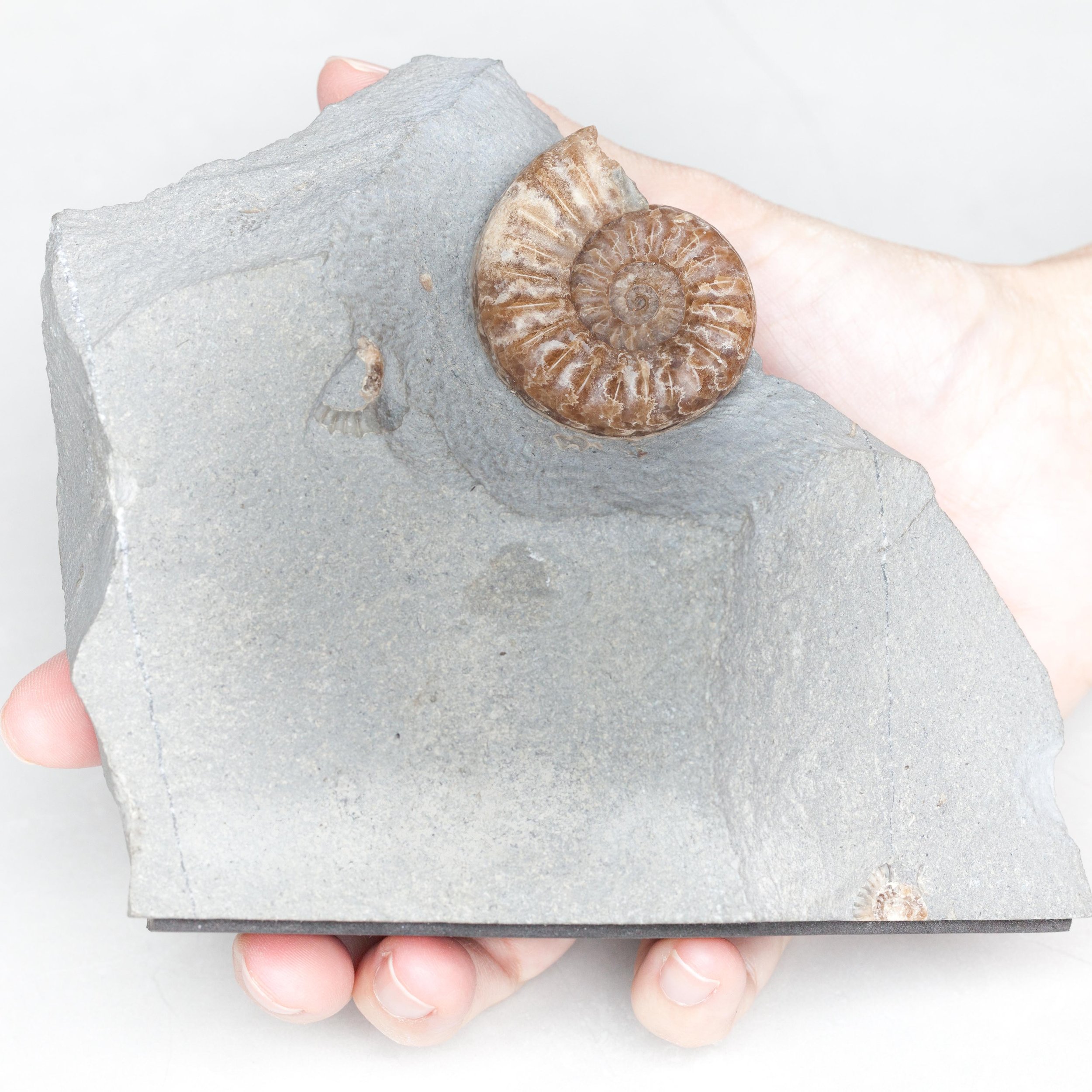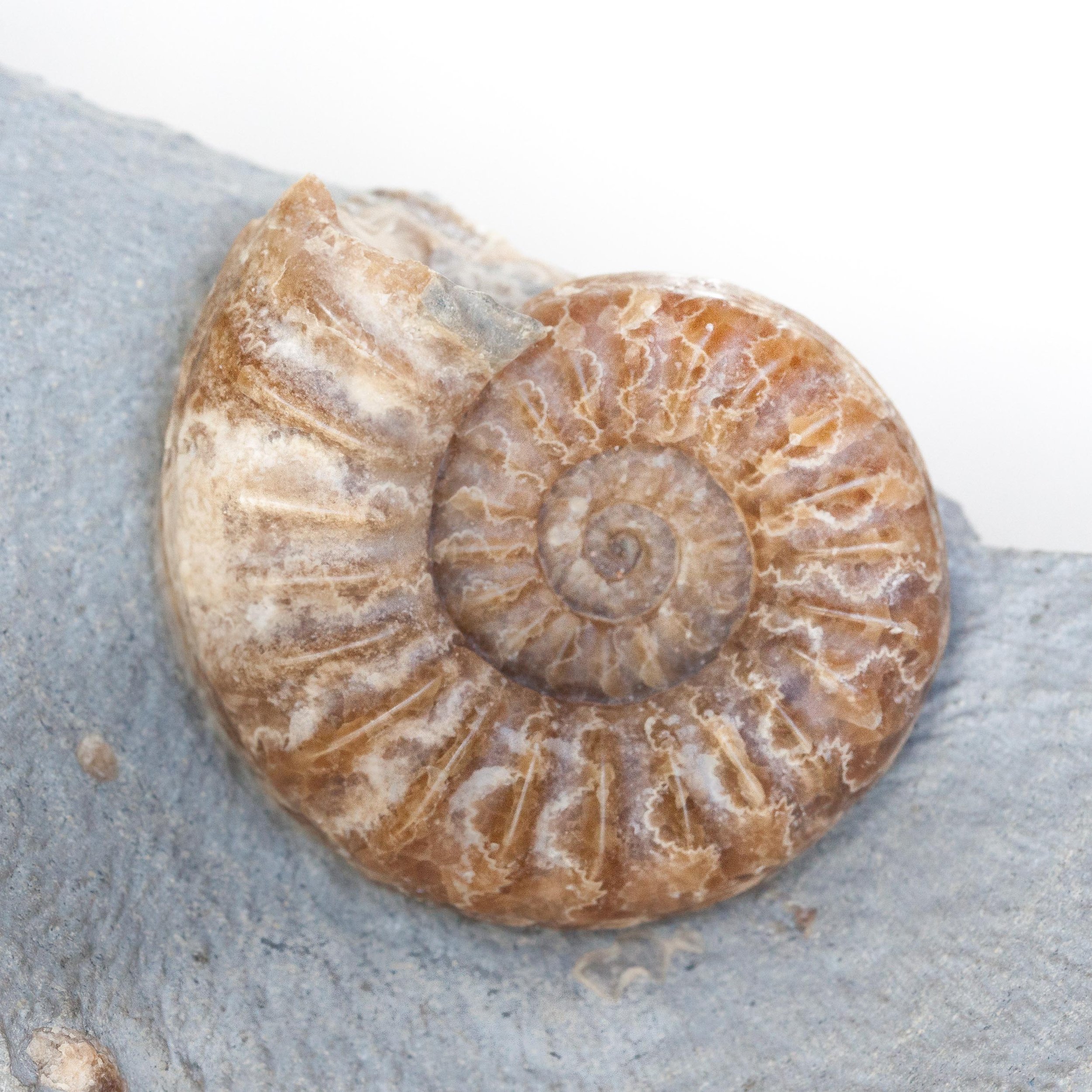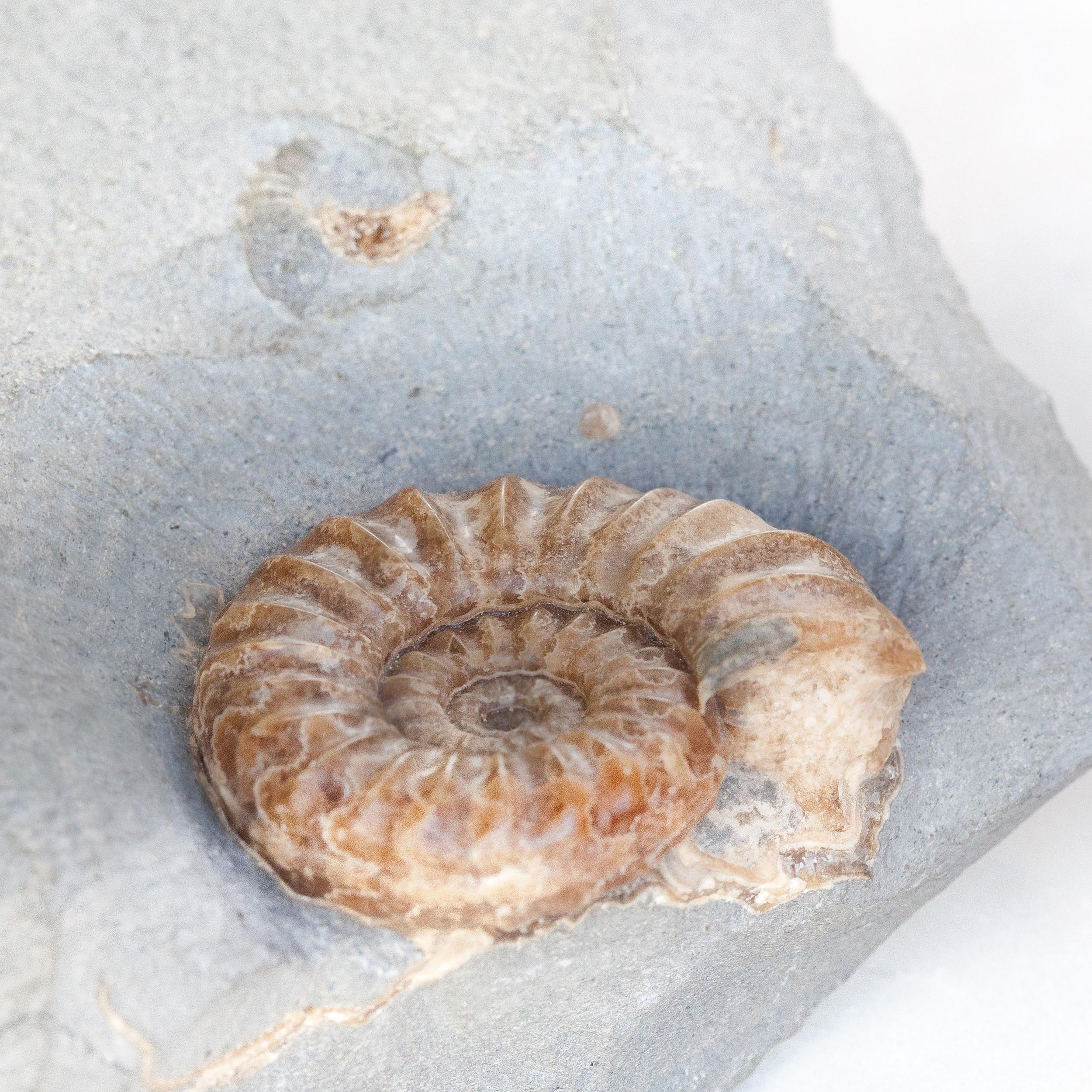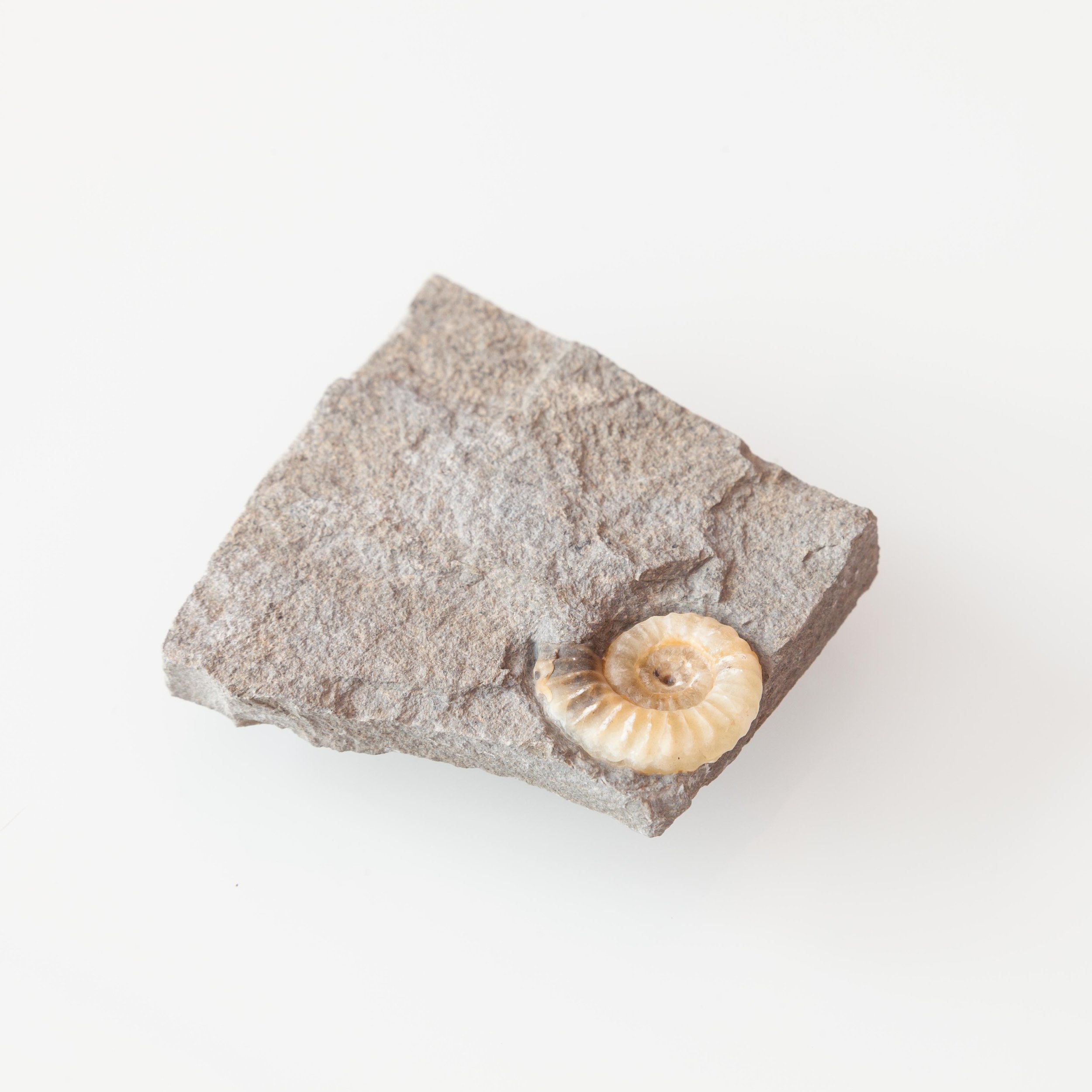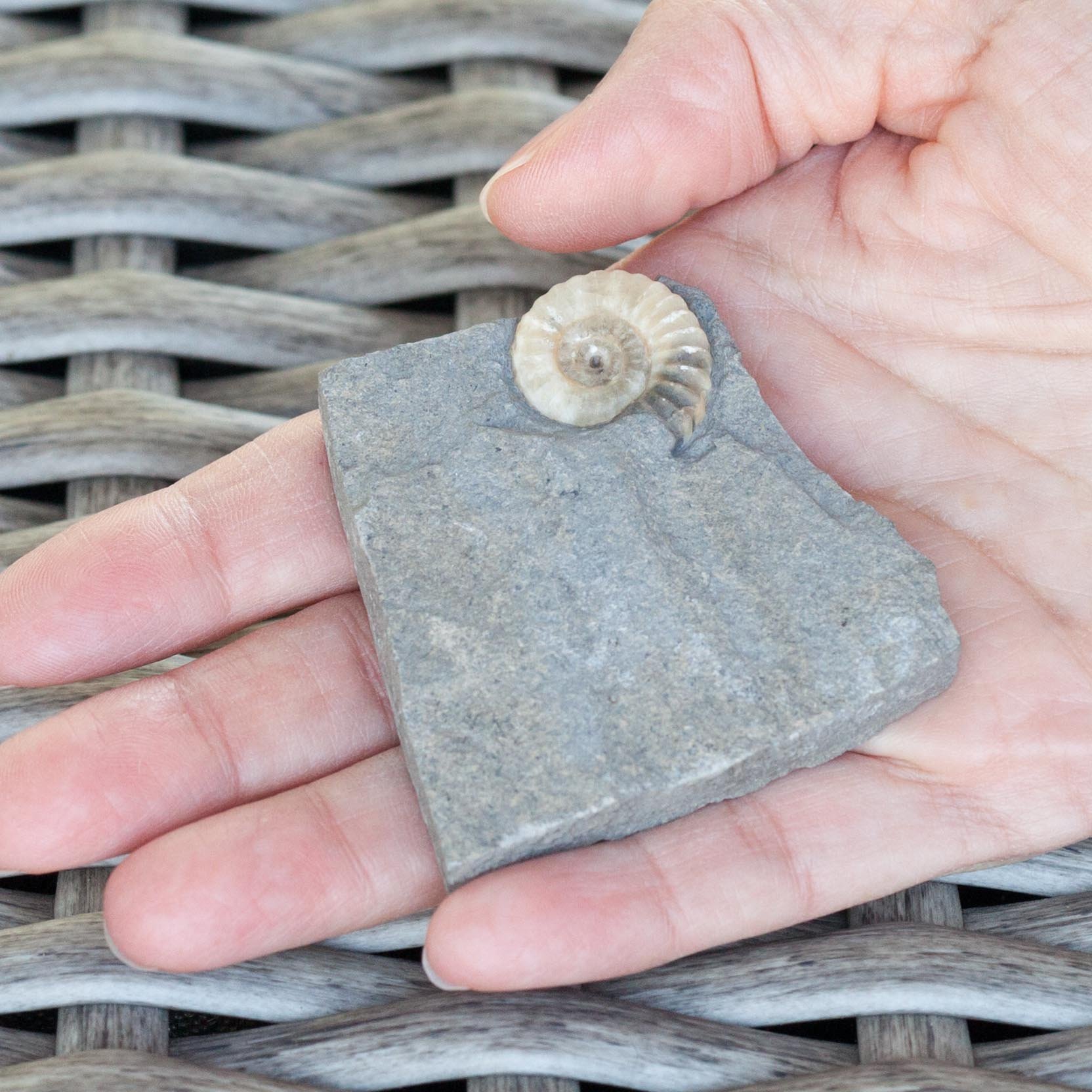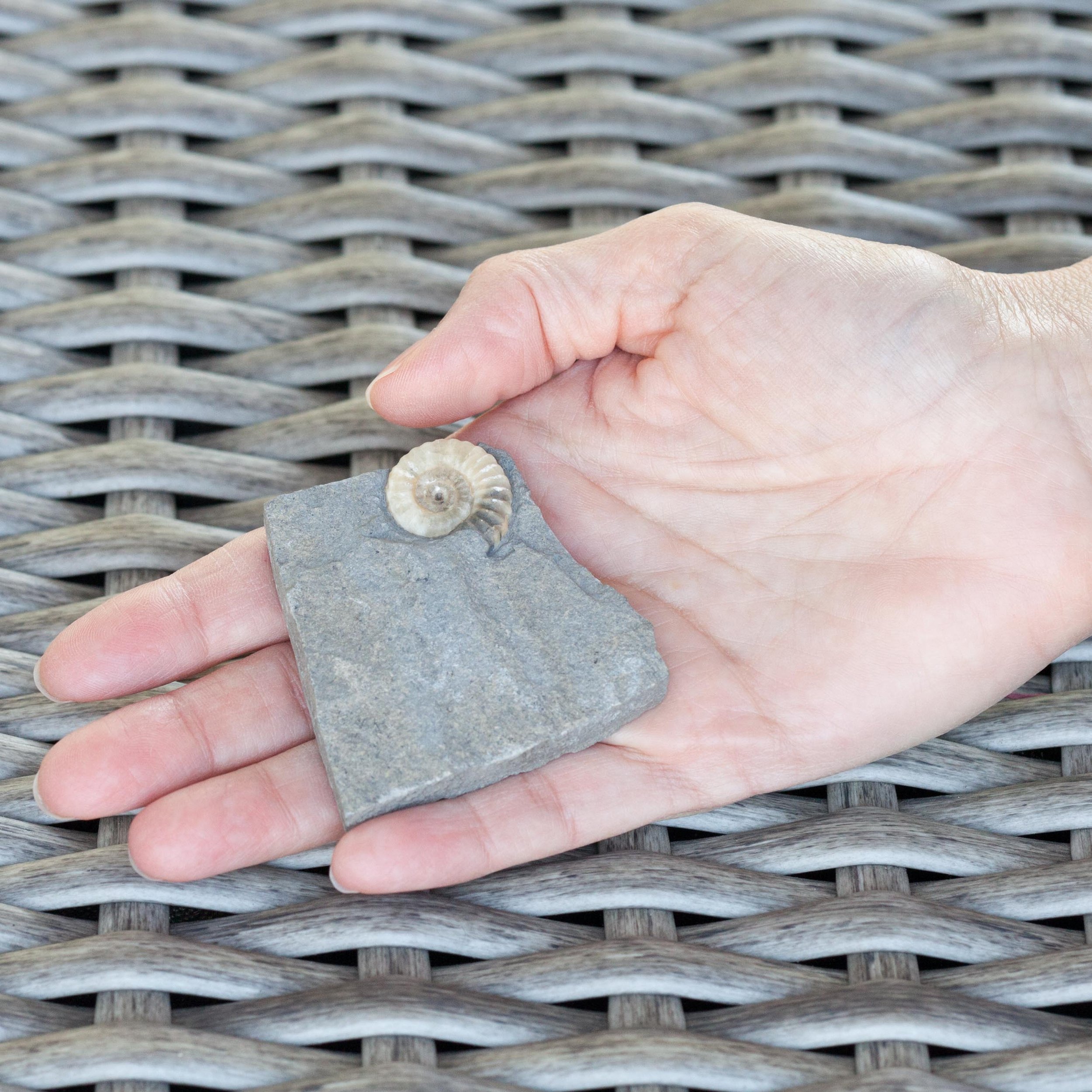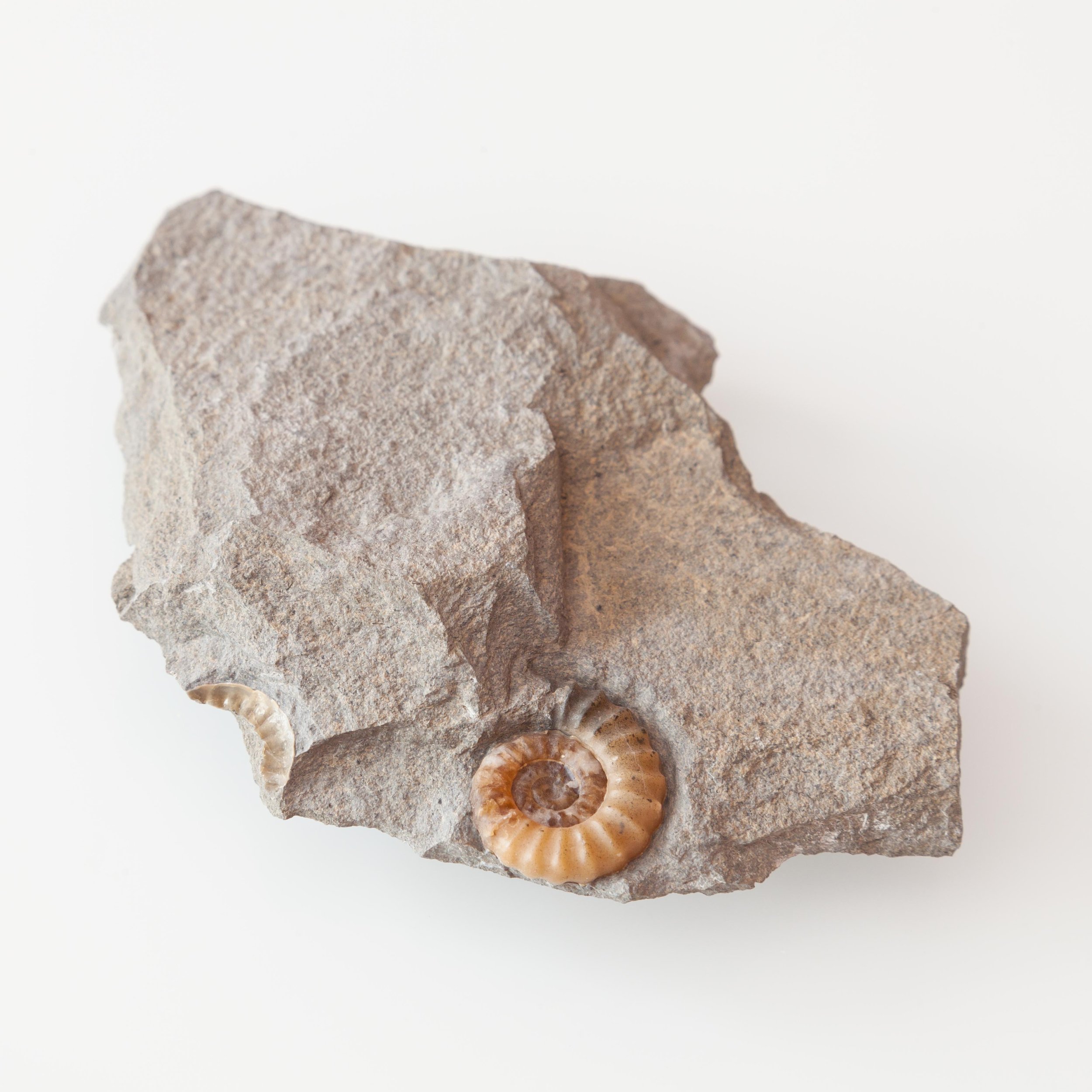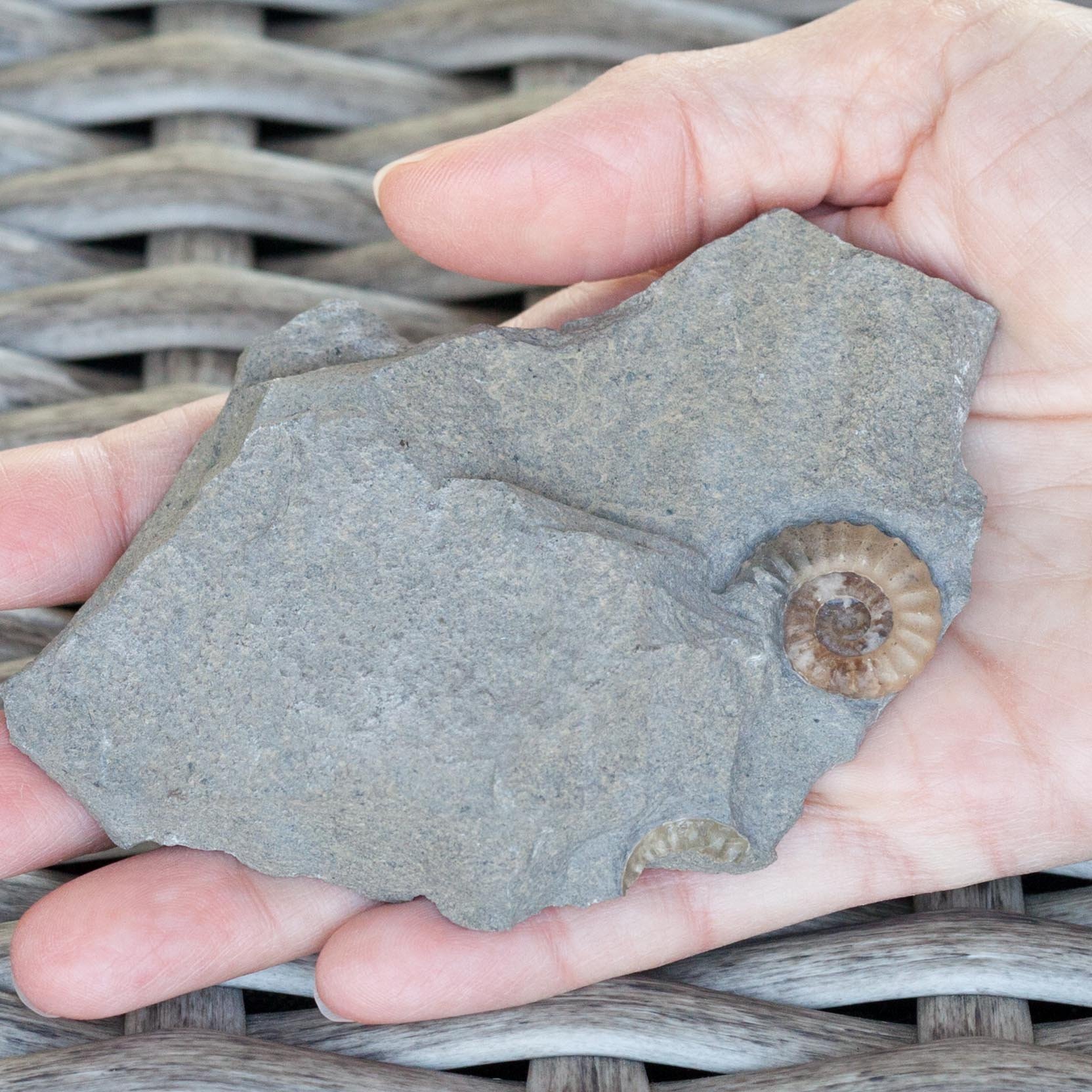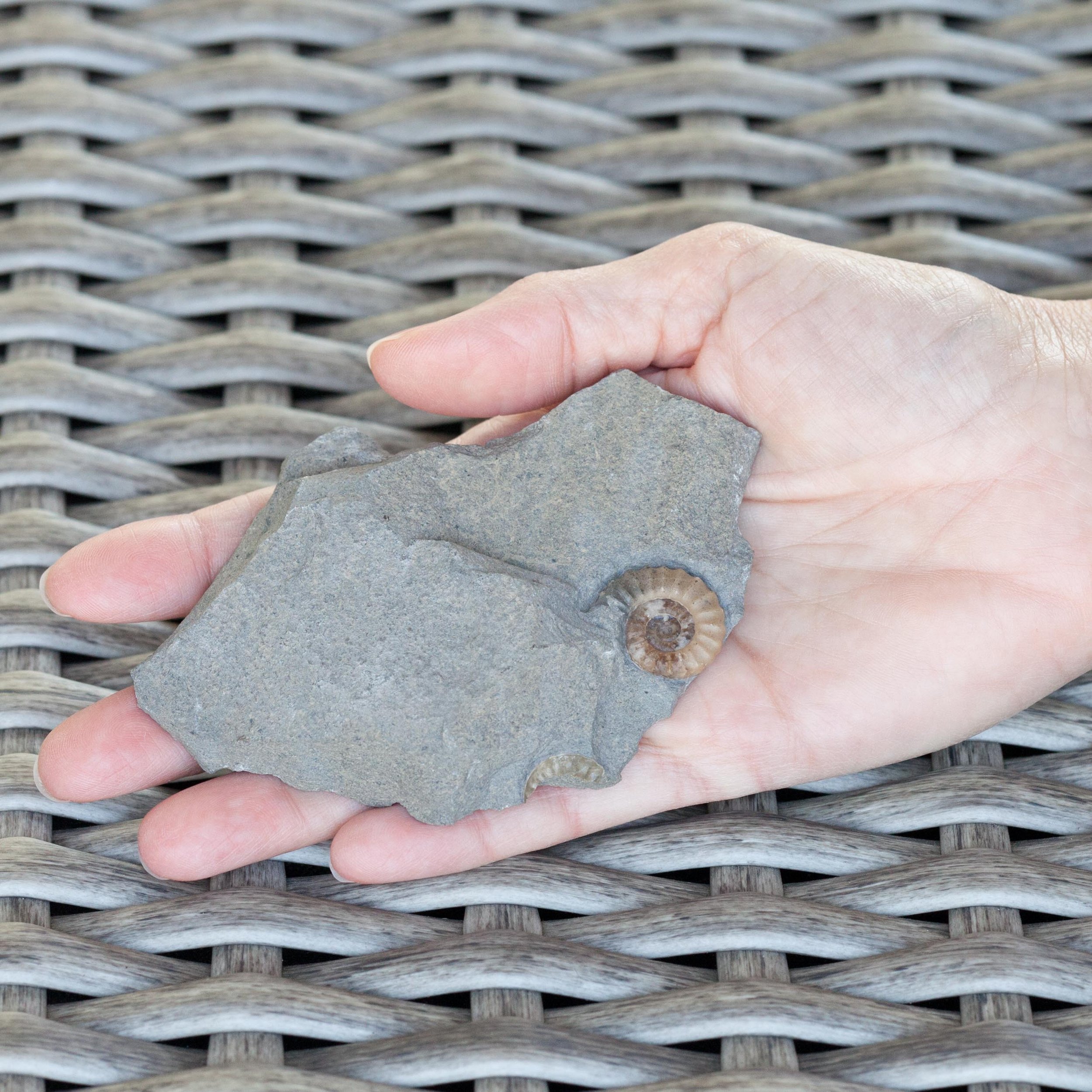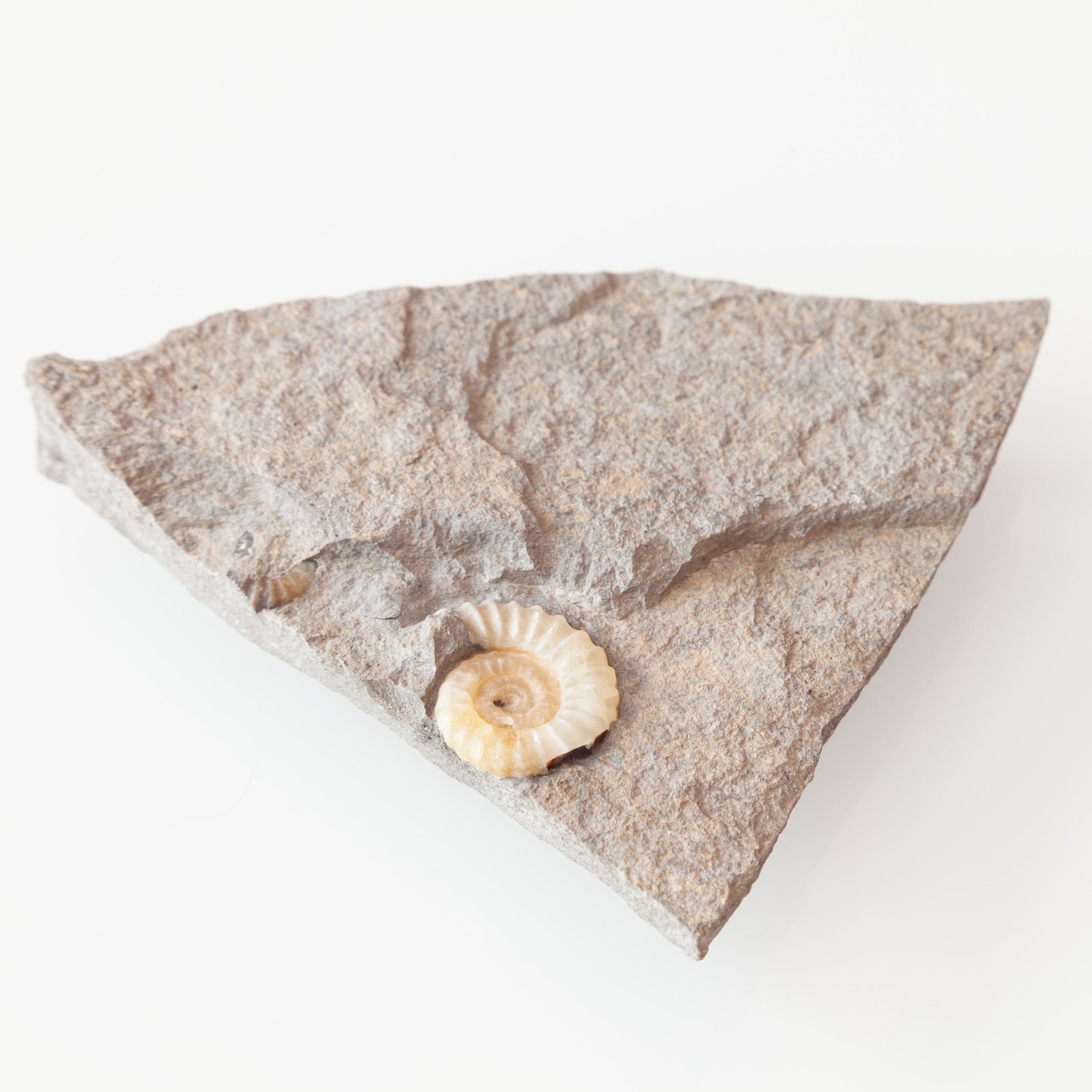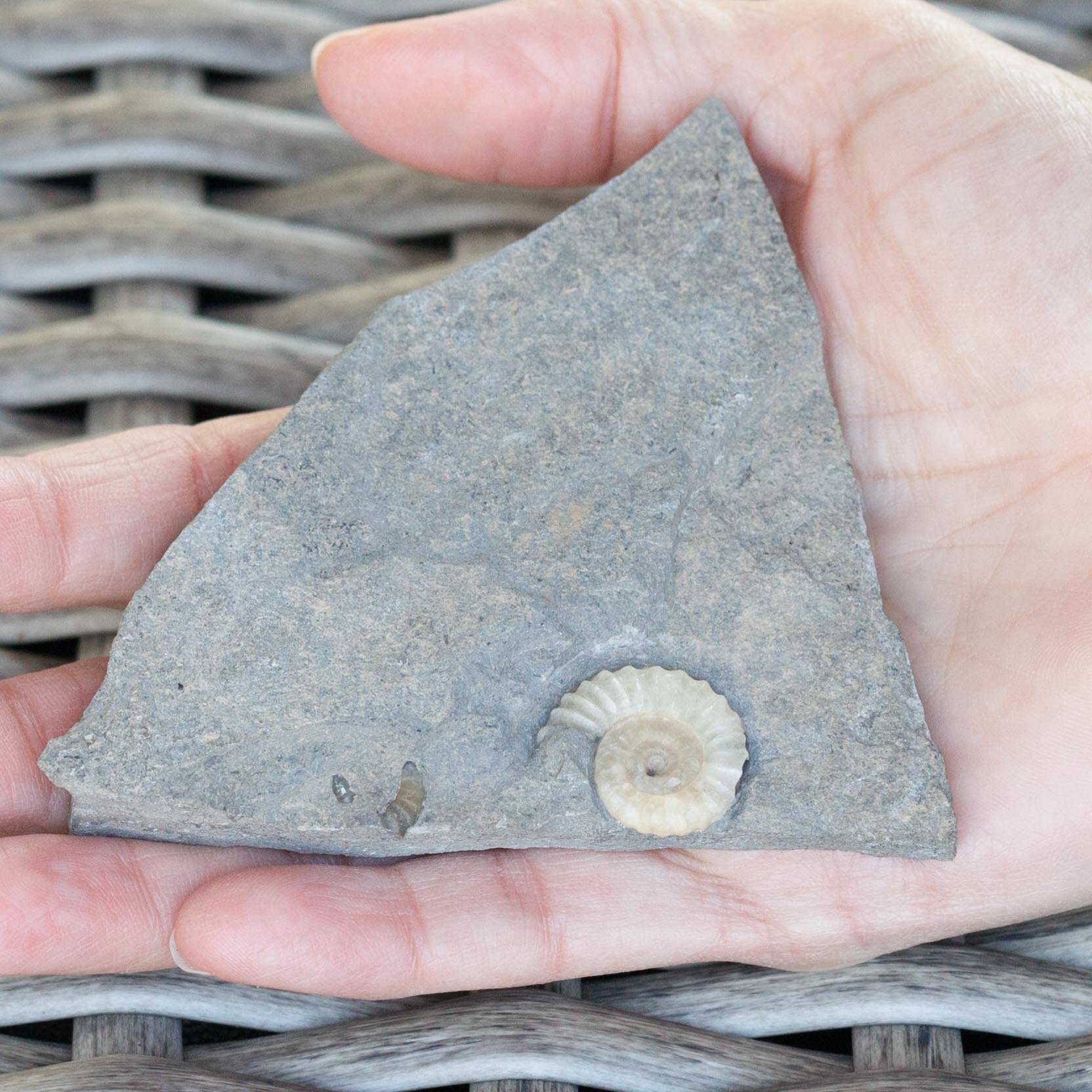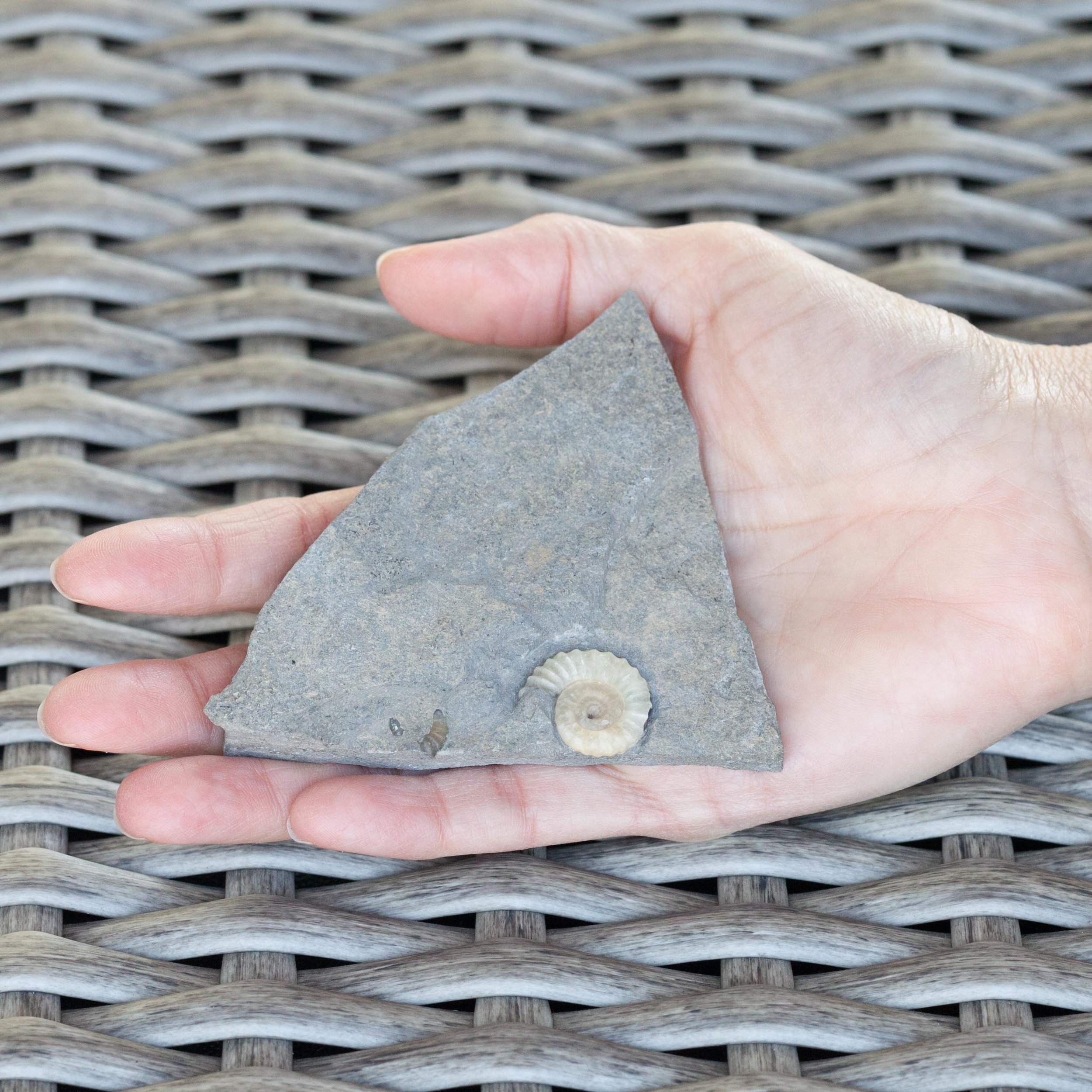Dactylioceras commune
Vendor: Fossil Soup
SKU Number: SQ4374268
A well preserved example of this classic British ammonite within the original rock matrix.
Found in the Bifrons Zone, Toarcian, Upper Lias, Lower Jurassic, Port Mulgrave, Whitby, North Yorkshire, England. Age:- 180 Million Years Old
Vendor: Fossil Soup
SKU Number: SQ4374268
A well preserved example of this classic British ammonite within the original rock matrix.
Found in the Bifrons Zone, Toarcian, Upper Lias, Lower Jurassic, Port Mulgrave, Whitby, North Yorkshire, England. Age:- 180 Million Years Old
Vendor: Fossil Soup
SKU Number: SQ4374268
A well preserved example of this classic British ammonite within the original rock matrix.
Found in the Bifrons Zone, Toarcian, Upper Lias, Lower Jurassic, Port Mulgrave, Whitby, North Yorkshire, England. Age:- 180 Million Years Old
Additional Information
Ammonites are a group of extinct marine mollusks that occupy the same class that includes octopuses, squids, and nautiluses.
The group Cephalopoda is divided into three subgroups: coleoids (including squids, octopuses and cuttlefishes), nautiloids (the nautiluses) and ammonites.
During their long history, ammonites survived three mass extinctions—most notably the Permian extinction, a global warming that was brought on by volcanic activity about 252 million years ago, and that killed 96 percent of the planet’s marine species. While many species of ammonites died out in that extinction event, scientists believe the survivors diversified explosively in the million years that followed. Ammonites hunted the planet’s seas until they were entirely wiped out by the same cataclysm that claimed the non-avian dinosaurs about 66 million years ago.
References:
Dactylioceras
Order Ammonoidea
National Geographic Ammonte Facts

